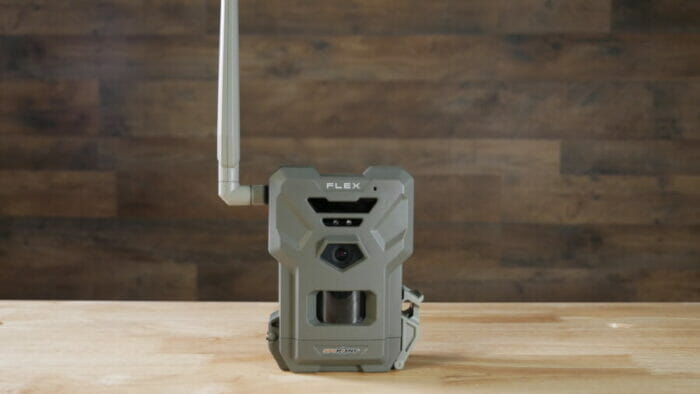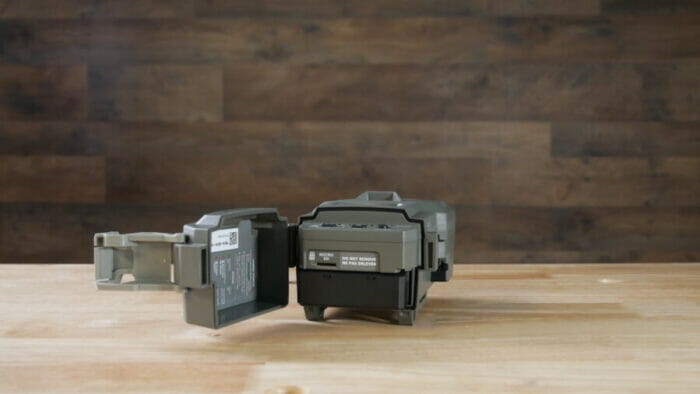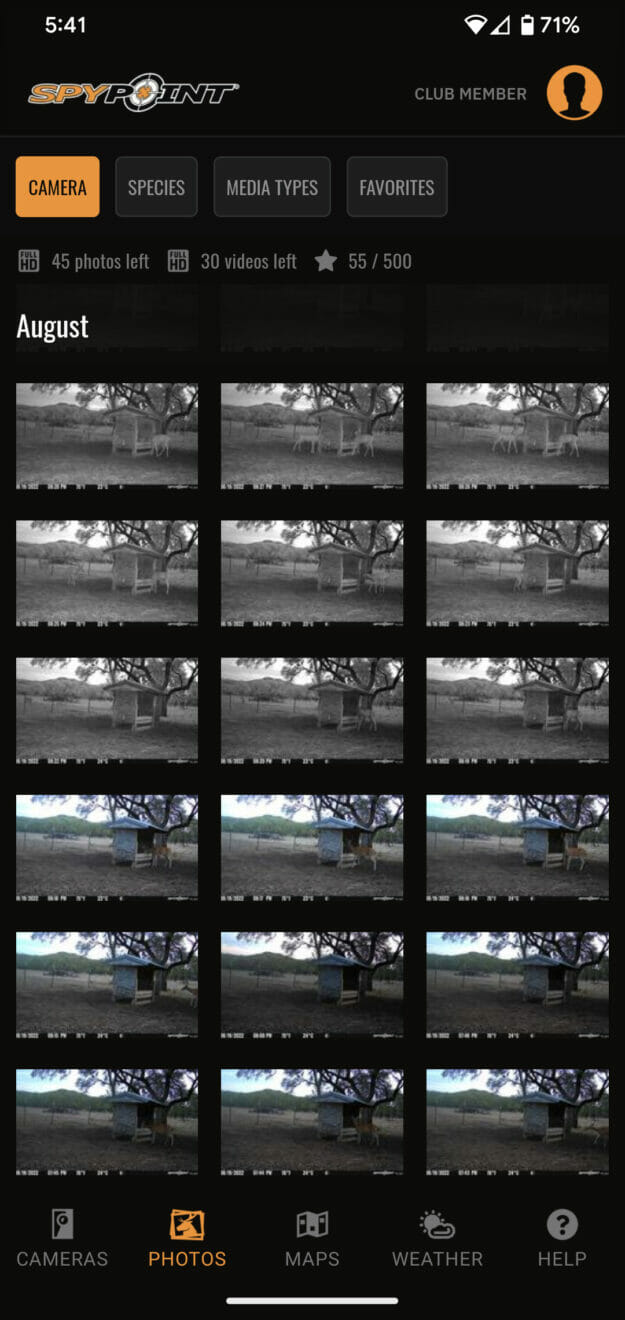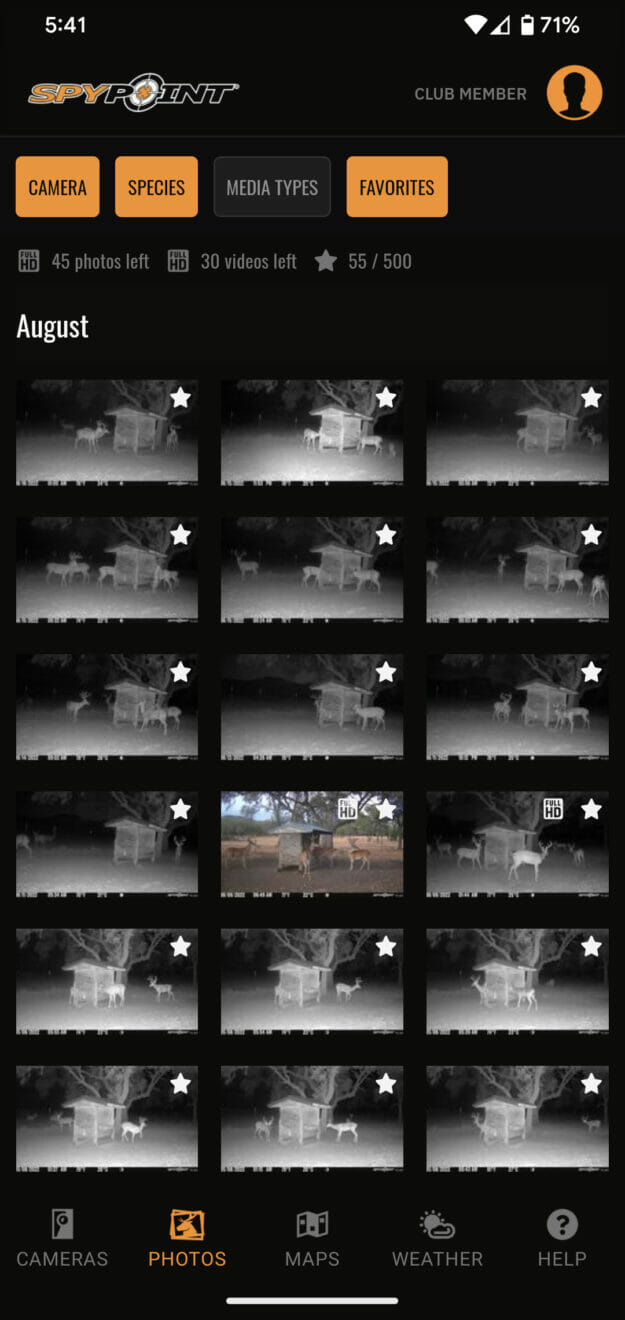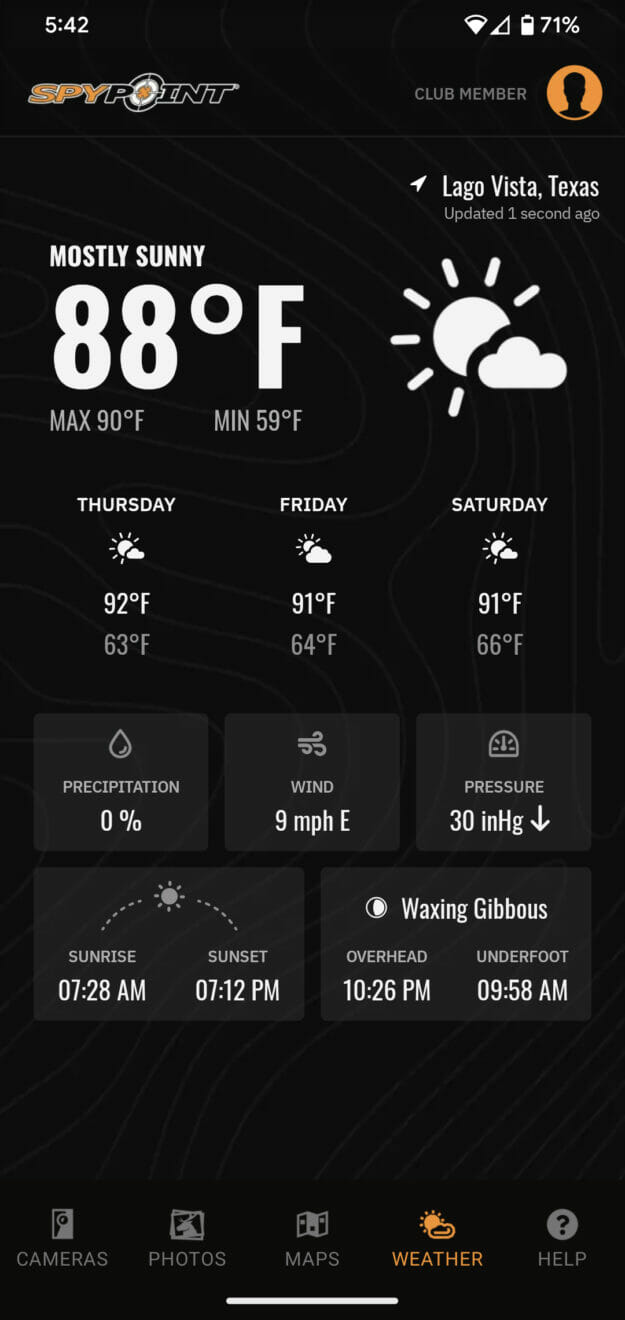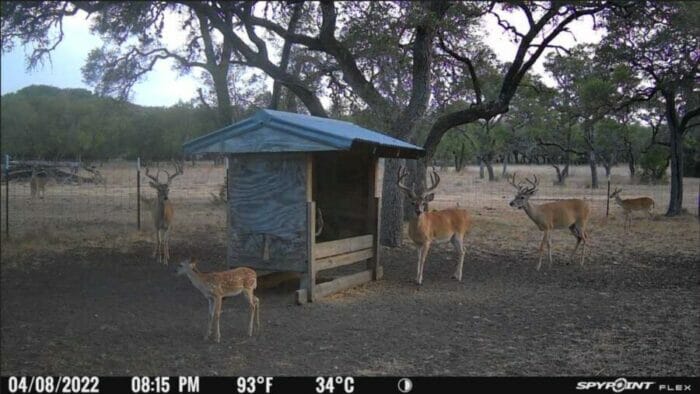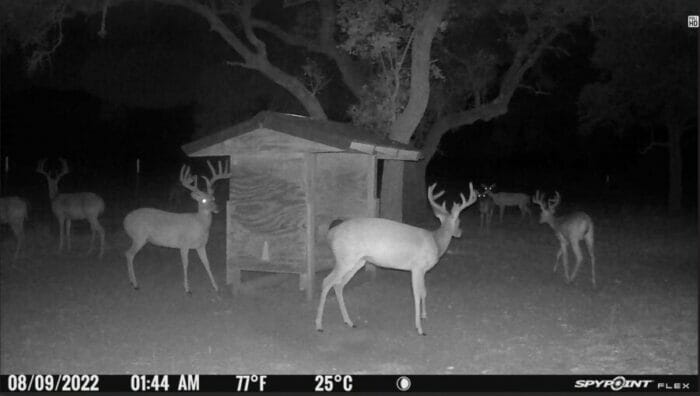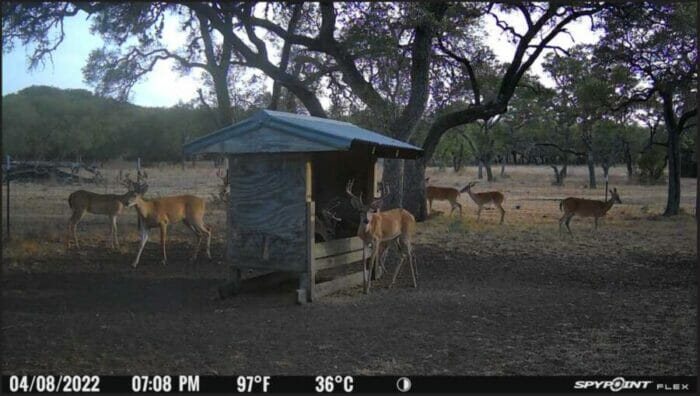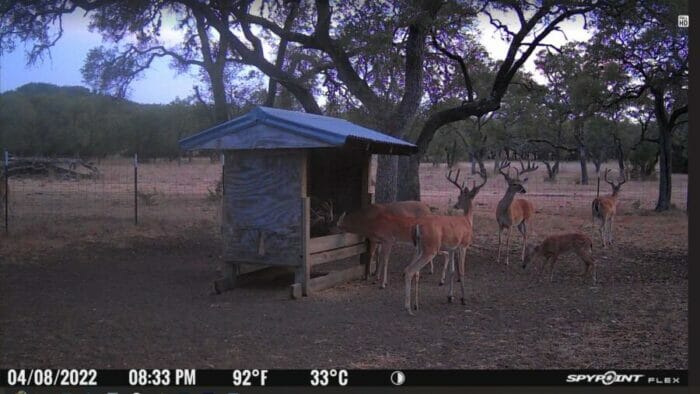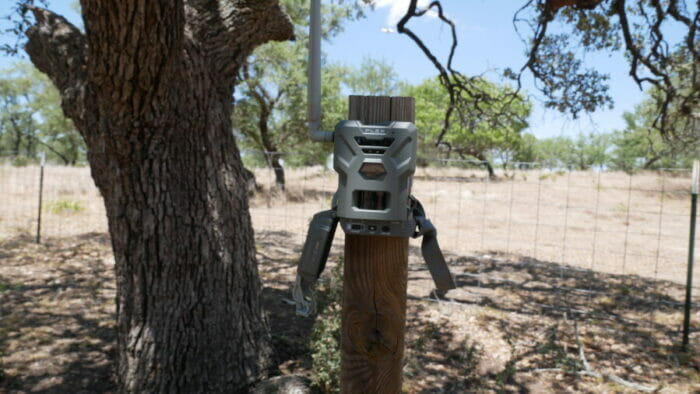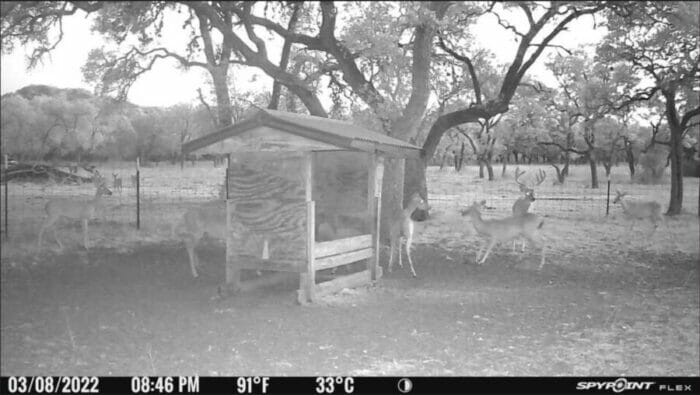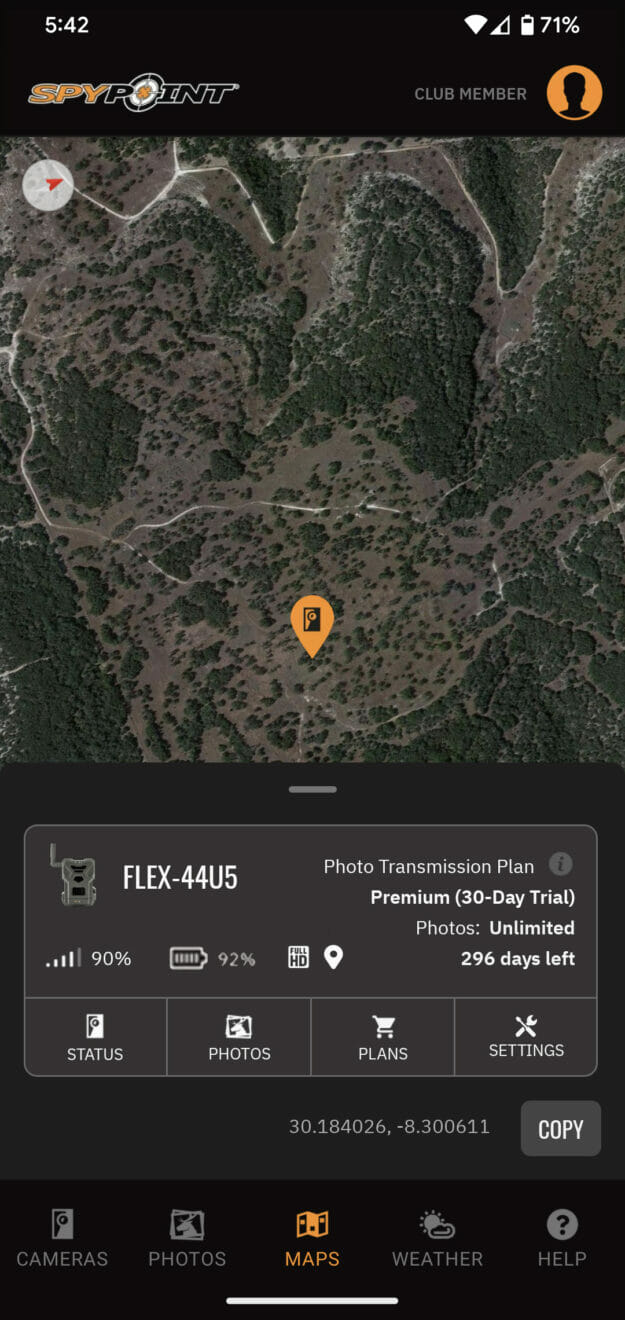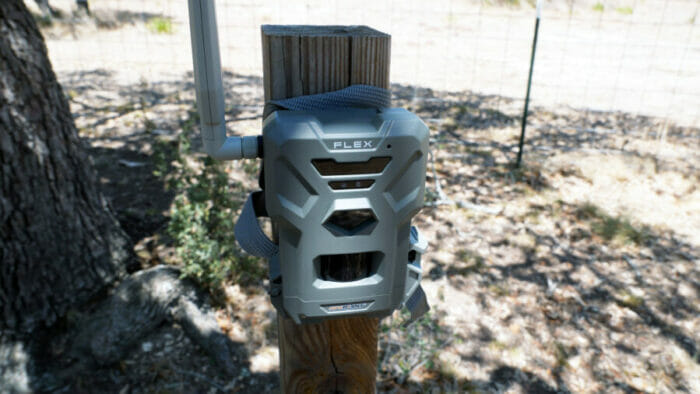SPYPOINT FLEX Cellular Trail Camera Review
Game cameras have come a long way very quickly. The new SPYPOINT FLEX trail camera leads the way with features that others are sure to copy. Primarily, it’s the ability to switch or flex between cellular carriers, so no more worrying about choosing AT&T or Verizon. Only last year, I had to test which carrier worked better at my deer lease to decide which camera system to go with. The SPYPOINT FLEX’s other features, such as the GPS function and the 1080p video with sound, are just bonuses for having a game cam you could use nationwide. I’ve had the FLEX for a few months now, so here is the breakdown of features and how it works.
SPYPOINT FLEX Setup
Before you take your SPYPOINT FLEX to the field, you need to activate the unit and create a SPYPOINT account. That process is easy: after you set up the account, then scan the bar code in the camera or enter the serial number in the app to add the camera to your account. Put in your batteries and your memory card. Power the unit on, hit the format button, and you are ready to go.
The SPYPOINT FLEX uses dual sim cards that work on multiple carriers, so you don’t have to worry about cell signal strength. But that doesn’t mean you don’t have to check your signal. This is easy to do since there is a signal LED on the camera. It is recommended that you have at least 3 bars for reliable transmission. I tested the SPYPOINT FLEX in several locations across the ranch, and the signal would vary, but it never lost signal completely, even though my cell phone didn’t have a signal. I found that moving the camera a few feet sometimes was the difference between 3 bars and 2 bars.
Using the SPYPOINT App
Any cellular game camera is only as good as the app and the data plan that support it. Compared to others on the market, this is where SPYPOINT has an advantage. This camera was my first experience with the SPYPOINT app, and it is easy and user friendly. There are four different plans from free to $10 a month per camera.
If you are in an area with low traffic or set up the camera to delay photos, you might be able to get away with the free plan. But I suspect most people will opt for the premium plan with unlimited photos. Now there is one twist to this. The app has several features that are unavailable unless you are an Insiders Club member for $99 a year.
Becoming a member has advantages. You get a 20% discount on plans and accessories from the SPYPOINT store, free shipping, monthly giveaways, and more. But the main draw is the upgrades to the app itself. Club members unlock the ability to sort by Buck, Antlerless Deer, Turkey, Coyote, Moose, Wild Boar, Bear, and Human Activity, whereas non-club members can only sort by bucks. You can also save 500 images as favorites and keep the last 12 months of photos. Nonmembers only have 30 days of photo storage. The yearly savings on the premium plan for a club member comes out to $24 for the year, so if you have more than one camera or purchase a few accessories, your membership to the Insiders Club will pay for itself quickly.
Review of the SPYPOINT FLEX
The SPYPOINT FLEX includes all the things you would expect with a trail camera, including sim cards and a strap to attach it to a tree or post. Looking at all the specs, you’ll see many features on this camera, so I will cover what I use and my experiences.
I set up the camera in a simple way just to see how the app performed and the quality of the images. I programmed the camera for a 30-second delay and to transmit once a day at 10 a.m. My thought process is that any deer in the area will be on camera without the need to take a ton of photos. Transmission once a day gives me the photos I need without burning up battery life. You are able to transmit as soon as a picture is taken, and I can see this being useful if you are on site and hunting something like pigs.
The pictures include metadata stamped on the photo that includes the date, time, moon phase, and temperature (°C/°F). This is useful if you want to track animal behavior. The pictures are color during the day and infrared at night. You can see the difference below.
The protein station is about 30 yards away, which is the edge of the flash for the camera, but I didn’t notice any issues. Now, I did point the camera in a direction where the sun would not be directly facing it. This might seem obvious, but don’t point the camera in the sun, or you won’t be happy with the outcome.
If you need more clarity on a photo, you can request an HD version of the photo. Below is the difference between a standard photo and an HD photo. Click on each to see the difference.
The SPYPOINT FLEX uses 8 AA batteries. With a transmission rate of once a day, I was able to take 7,082 pictures before the batteries gave out. This was using regular Duracell batteries. Honestly, that is a ton of photos and should last you all season if you don’t have a ton of animals on the property. Temperature and battery type will obviously give different results, so you might consider a solar panel to keep the camera up and running. Additionally make sure that you don’t have any grass moving or branches that can give you worthless photos and chew up battery life.
You can put in a memory card up to 512 GB, but I used the 16GB card since I’m using the app. If you are not using the app, then get a larger card unless you want to clear it often. Honestly, though, why get a cellular camera if you aren’t going to use the cell function?
If you are using the camera on public land or sharing a lease with someone, you can track the location of the camera within the app. So if it ever goes missing, you can easily see where to find it. If stolen, you can find the exact location and report the address to law enforcement. The map function in the app also lets you find your way to your hunting location and allows you to drop markers.
Final Thoughts of on the SPYPOINT FLEX
The SPYPOINT FLEX is easy to set up, and the app makes it easy to track exactly what you are hunting. I’m pleased with the performance and the app. Really the strength or weakness of any cellar camera comes down to the app, and this is where SPYPOINT really wins. Honestly, for all the features, I’m surprised that they aren’t charging more for the service, but I’m glad they aren’t. I think the FLEX has converted me to a SPYPOINT customer, partly for the cameras and mostly for the app.
I haven’t had the camera long enough to tell how the plastic will hold up, but the camera has been out for 3 months and looks brand new, so I suspect I won’t have any issues. For a trail camera well under $200 ($169 to $109), depending on the site, I don’t think you can go wrong.
Jeremy Mallette is co-founder of International Sportsman. An avid hunter and outdoorsman, he has spent more than a decade in the outdoor industry, from hiking and camping to silencers and hunting. His father taught him to shoot at age six, and he received his first firearm at age eight — a 1942 Colt Commando .38 special revolver. He enjoys yearly trips to Kansas for pheasant hunting, spending time with his children at the deer lease, and collecting unique firearms.

